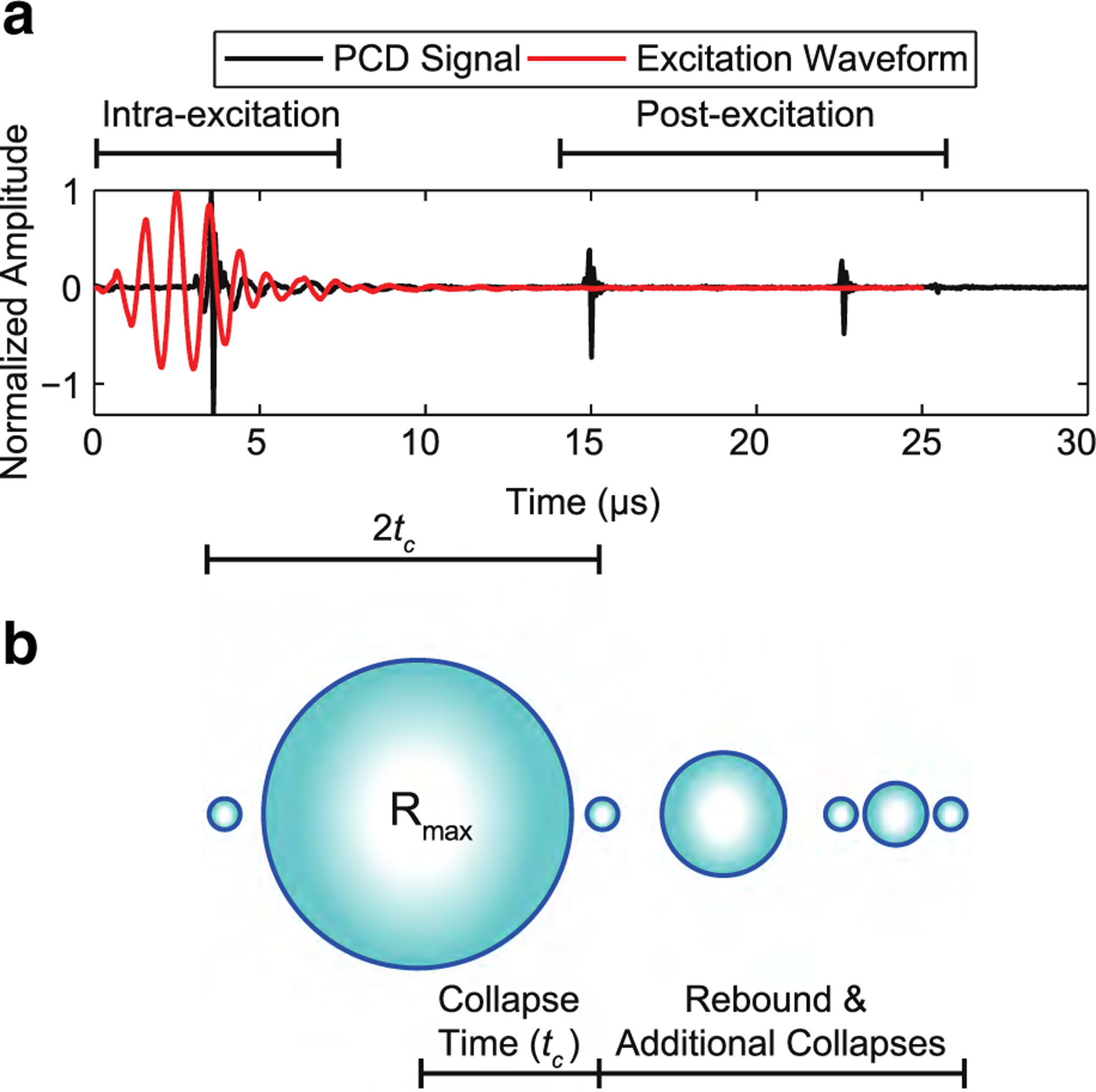Fig. 2.

(a) An example time trace from the passive cavitation detector revealing intra- and post-excitation acoustic emissions relative to the focused ultrasound excitation waveform during the acoustic droplet vaporization of a single phase-shift nanoemulsion. The excitation waveform was a 1-MHz pulse at a peak negative pressure of 5.6 MPa. The waveform was measured using a calibrated hydrophone at a lower peak negative pressure (~1 MPa). (b) Hypothesized microbubble dynamics in relation to the temporal characteristics of the time trace. It is theorized that the microbubbles undergo rapid growth to a maximum radius (Rmax), followed by multiple collapses and rebounds after acoustic droplet vaporization of phase-shift nanoemulsions. The collapse time (tc) is defined as the time between the first intra-excitation collapse spike to the first post-excitation collapse spike.
